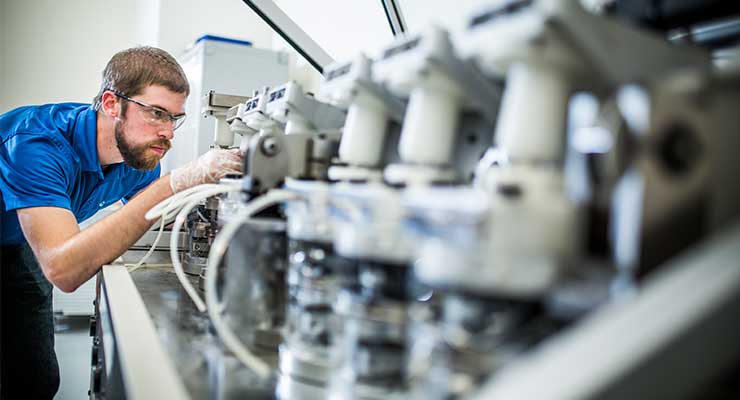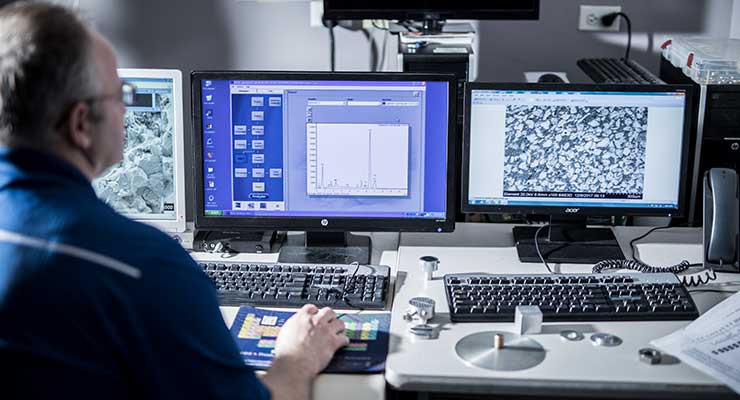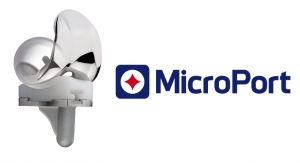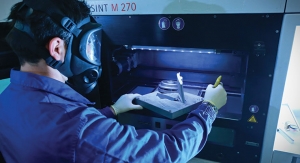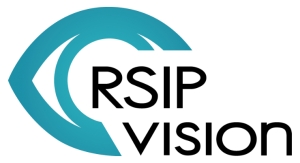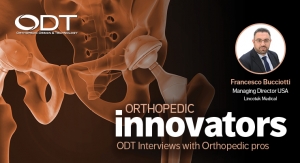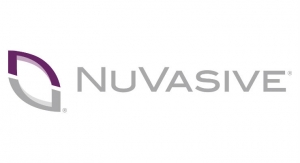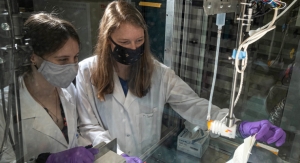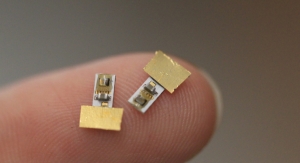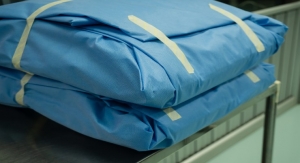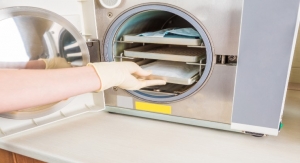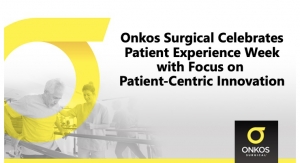Sean Fenske, Editor-in-Chief09.15.20
Testing has always been a critical process within the medical device development pathway. Similarly, the complexity of the protocols has remained substantial as well. As such, outsourcing these necessary procedures has been a successful option for medical device manufacturers, both large and small. Ensuring an in-house team is aware of the latest ISO standards and regulatory demands can be challenging. As such, working with experts who focus exclusively on life sciences testing is often preferred.
Recently, however, keeping up with the changes happening across the industry, from ISO revisions to new EU regulations to updated FDA guidance, has perhaps never been more difficult. The requirements for testing have ratcheted up to an even greater level (or soon will be), so in order to ensure a device launch remains on time and doesn’t encounter resistance from a regulatory authority, manufacturers are leaning on their testing solution partners even harder.
As such, ODT reached out to a variety of testing experts to get their assessment of the landscape and offer advice to orthopedic device manufacturers on factors they should keep top of mind. Whether working with a testing service provider or taking on the task on their own, firms need to know what changes are occurring and considerations they need to determine early in the design phase.
Contacted to provide their invaluable insights were:
Mark Cunningham, Ph.D., is senior director, science and technology, technical services, for St. Paul, Minn.-based WuXi AppTec Medical Device Testing, a provider of provide world-class, integrated, testing solutions.
Maciej Jakucki is medical device testing manager with Element Materials Technology, a global provider of testing, inspection, and certification services with over 200 locations worldwide.
Christopher Parker is the associate department head in vivo biocompatibility at Toxikon Corporation, a Bedford, Mass.-based preclinical contract research organization providing in vivo, in vitro, and analytical testing services.
Helin Räägel is a biocompatibility expert at Salt Lake City-based Nelson Labs, a global provider of laboratory testing and expert advisory services for medtech and pharmaceutical companies.
Thor Rollins is the senior director of Advisory Services at Nelson Labs.
Christopher Scott is the vice president of Eurofins Medical Device Testing, a firm with more than 20 laboratories in North America, Europe, and Asia Pacific offering regulatory compliance expertise and experienced GMP/GLP/ISO 17025 testing.
Don Tumminelli is senior technical manager of Client Services at HIGHPOWER Validation Testing & Lab Services. Based in Rochester, N.Y., HIGHPOWER is an ISO 17025 accredited laboratory and ASP factory trained to perform STERRAD functionality and efficacy validation testing.
Audrey Turley is a senior biocompatibility expert at Nelson Labs.
Sean Fenske: What’s the biggest challenge in testing orthopedic devices today?
Dr. Mark Cunningham: Orthopedic devices continue to become increasingly complex in nature, which in turn complicates the necessary evaluation process. From multiple component devices, delivery systems, product packaging, and more, when pulled in too many directions, a testing program’s focus can be complicated and/or compromised. On top of this, companies must test devices within use scenarios that closely resemble the intended clinical use scenarios, which makes determining appropriate test systems and designs challenging. Before testing begins, manufacturers need to ask themselves if they should narrow the purpose of what they are trying to address rather than going through the motions. From that point on, lab testing partners can aid in determining the next steps and what is appropriate with the end goal in mind.
Maciej Jakucki: Getting parts! The number of projects getting delayed due to part availability has definitely increased. It seems like most projects that come through the lab have a tentative start date planned, and then delays of four, eight, or more weeks are common. Once the parts hit, everyone is scrambling to get parts delivered to try to decrease testing leads and get to the regulatory filing. I think another challenge is testing can be complex, and if the volume of parts needed for testing or extra parts for contingency aren’t adequately planned for, you can be out a long time before manufacturing can get to your new order. Planning for these potential issues can save a lot of time.
Christopher Parker: As with numerous therapeutic areas, many new devices coming to market are becoming more novel and complex. The risk-based evaluation used to examine these devices has become increasingly more important in developing testing requirements and planning. Devices containing biologicals, such as collagen, or degradable/remodeling materials make the sample preparation and execution of certain studies more complicated and require much more up front planning so a test device can be best evaluated within certain models.
Helin Räägel: We see a number of different devices in the orthopedic field made from very standard materials, such as titanium, stainless steels, etc. Also, more and more medical device manufacturers are using materials that have been shown by the suppliers to be biocompatible with extensive material information and characterization already performed by the maker of the resin(s). In general, for new submissions, due to long-term contact with the body, both ISO 10993-1 and the FDA guidance document require the assessment of basically all the biocompatibility endpoints to ensure the devices are safe to be used in the patient. In the past, the approach has often been to just test for everything. But does this really make sense? When we are talking about standard processing methods, such as machining and passivation for metal devices, or already demonstrated chemical and biological reactivity for the polymer resins, and a very typical shape and characteristics to the device, do we really need to conduct all the animal tests again on a material that has been proven to be biocompatible so many times before? Would it really give us any valuable information about the reactivity in a patient in the end? Our approach to these types of assessments has been to define the steps of the specific manufacturing processes used in the production of a given device to understand where something potentially hazardous could be introduced, and use a tailored testing plan to reduce needless costs in time, money, and animal lives to provide the answers. For metal devices, the ChemTox approach (extractables/leachables testing with a toxicological risk assessment), for example, has demonstrated to be an excellent alternative. For other materials, a feasibility test that verifies compatibility with standard solvents should be the first step to ChemTox.
Thor Rollins: Meeting the varied global requirements. Even though the ISO committees are working hard to harmonize standards across the regulatory landscapes, we still see differences between U.S., EU, and Asia that requires a thoughtful approach toward test plans. You must know all the requirements for each area and then choose the worst-case parameter for your testing, if you want to test once for each region.
Christopher Scott: The coronavirus pandemic has impacted testing laboratories in a number of different ways. On the demand side, many COVID-19 related projects were moved to the front of the testing queue, which initially balanced the drop-off seen in orthopedic projects as manufacturers reacted to widespread deferral of elective surgery and disruptions in supply chains. As orthopedic companies return to testing, laboratories must manage the increased workload while maintaining safe operational practices, such as social distancing, staggered shifts, and remote working.
Don Tumminelli: Hands down, obtaining appropriate sample sizes from the manufacturer for testing. More specifically, acquiring enough samples for validating a cleaning process to create a device IFU.
Currently, the FDA requires us to have n=5 of each device (three test samples; one positive and one negative control) to be included in testing. Therefore, if we are validating a complete instrument set for an orthopedic device manufacturer, we’d ask for a total of five complete sets in order to perform the cleaning validation. Acquiring this amount of devices can be difficult, especially if working with a startup company who may only have one or two sets available for testing purposes. It may not get any easier in the future to acquire a statistically valid number of test samples, as the FDA has proposed increasing sample sizes for cleaning studies based on the recent outbreaks of superbugs in some endoscopes. This is currently being worked on through the AAMI/ISO standards meetings, so we’ll have to wait and see where the final number of test samples ends up.
Fenske: How have regulatory changes impacted orthopedic device testing? For example, the recently delayed switch from the MDD to the MDR in Europe?
Räägel: The biggest challenge is knowing or anticipating what the regulatory body wants to see in a submission. We have seen an increase in the variability in what is “needed,” which is probably arising from the shift in the mindset of biocompatibility from the so-called old-school thinking where testing for all endpoints has been a standard path to a risk-based approach. As a scientist I fully stand by the risk-based assessment to ensure we utilize the resources we have in the best manner in order to answer the critical questions and provide proof of patient safety. However, it should be kept in mind that good storytelling where the facts are laid out and the thought process in the risk assessment has been clearly and understandably relayed to the reviewer (whoever it might be) is the key!
Rollins: One of the biggest regulatory challenges is uncertainty. I often hear from my clients they would do whatever they need to, if they just knew what that was. The uncertainty from how Notified Bodies are going to enforce the new MDR is compounded by new ISO standards, like 10993-18 and 10993-1. These combinations make having a good, interactive relationship with your Notified Body more important than ever.
Tumminelli: I would have to say the newly enforced requirements of ISO 17665 to provide full thermal profiles for all steam-sterilized instrument sets, as well as providing Ao studies for thermal disinfection within a mechanical washer. Another item, which is catching many off guard, is the EU requirement to validate high level disinfection post cleaning on devices that require terminal sterilization. The “disinfection step” is supposed to protect the healthcare workers who handle the devices during reprocessing and is not necessarily in place for patient safety. So, to clarify, even if the devices are required to be terminally sterilized, an interim disinfection step now has to be validated after the cleaning process and prior to sterilization to protect the health of reprocessing technicians. Even though there has been a delay in the MDR, many of our clients are already being audited to the new requirements by their registrars.
Fenske: Can you explain the changes regarding the ISO biocompatibility standard and how it has impacted orthopedic device testing?
Dr. Cunningham: At a high level, chemistry has become a more critical part of medical device biocompatibility assessments, both in the U.S. and in the EU. Manufacturers must understand not only the materials in their device, but all of the additional factors that could impact chemical safety, from mold release agents to relevant delivery systems. Chemical analysis is the only way to verify this information, which has prompted a need for chemical characterization and toxicological risk assessment earlier in the testing process. Partnering with labs that report fewer unknowns can aid in a clearer pathway with subsequent biocompatibility testing.
Material assessment is an especially important factor for orthopedic devices that aren’t only mechanical but also serve a biological function. These designs can add poignant questions to biocompatibility testing goals. For example, consider a device that elicits a material mediated immune response in a particularly sensitive population. How will manufacturers determine which materials they must investigate further if the understanding of the device’s composition is incomplete?
Parker: When ISO 10993-1 updated in 2018, it moved the biocompatibility evaluation of medical devices away from being purely biological evaluations and more toward a risk-based approach, which emphasized a combination of chemical characterization, risk assessment, and biological evaluation. There has been an emergence of more and more orthopedic devices based on biological matrices or polymer and metal materials that may have been used in other products or therapeutic areas. A risk-based approach is designed to help bridge the gap of what information is currently known about a new device’s materials and what needs to be elucidated through testing.
Räägel: The most recent updates directly affecting the long-term implants such as orthopedic devices have been associated with ISO 10993-18 (2020). While the previous version of the standard already highlighted the importance of using a chemical characterization approach for medical devices (ChemTox), the new revision provides more specific guidance on when and how to use it. In my opinion, update to this standard really came as a “push” for moving away from the standard in vivo testing to a more sophisticated chemistry approach. It should, however, be noted that while the chemical characterization approach may be an excellent alternative for some devices (especially solid, metal devices), it can have compatibility issues (due to standardized methods—e.g., typically used solvents) for others (e.g., softer plastics that may start to degrade). In the latter cases, where adjustments to these standardized methods and parameters may be required in order to use the ChemTox approach, the situation with submissions may become infinitely more complicated as interpretation of “correct” or “clinically relevant” conditions can vary between what you think, we think, or the regulatory body thinks.
The ChemTox approach also requires the assessment of the chemical characterization data by a toxicologist to ensure levels of safety for the detected chemicals released by the medical device. While ISO 10993-17 has not been updated (yet), there was a recent addition of ISO 21726 (2019)—a new standard that describes the basic principles of using a threshold of toxicological concern (TTC) value and how that could be applied to assess safety of medical devices. While TTC has been used for years by toxicologists, it is good to have a harmonized standard recognized by all that can be referenced in the assessment.
Rollins: The biggest challenge we have seen to the new ISO 10993 standards revolves around when chemical characterization is required. Since a good chemical characterization provides excellent information about a device, we see many regulatory agencies push all devices toward extractable and leachable testing. The issue is that for many orthopedic devices (like surgical tools or guides) that have limited interaction with the body, extractable and leachable testing provides extensive information compared to their inherent risks. Therefore, a thoughtful risk assessment and plan should be made for every device so the correct testing can be applied that mitigates the risks of the device.
Tumminelli: The ISO 10993 series of standards is being enforced heavily by many regulatory agencies around the globe. What has really been happening is the enforcement of the “matrix” from 10993-1 which helps evaluate a device for the required tests. This has caught some orthopedic device manufacturers off guard, as they have historically only tested the “Big Three” biocompatibility tests of cytotoxicity, irritation, and sensitization. Manufacturers are now finding out there are many other tests that need to be conducted beyond these. Over the years, the matrix was not enforced by regulatory entities as it was written, so this has only added to the confusion. Of course, there will always be the ever-more restrictive acceptance criteria for EtO residuals many manufacturers continue to struggle with, especially with the increased scrutiny of EtO processing of single-use medical devices by contract sterilization companies.
Audrey Turley: The most significant changes in the ISO 10993 standard series that will impact orthopedic devices are in ISO 10993-18 and ISO 10993-17. Chemical characterization testing outlined in ISO 10993-18 is a significant investment for manufacturers and having an updated standard to reflect current industry approach and the best available science is crucial to ensure money put into this testing is well spent. ISO 10993-17 addresses how the chemistry data should be evaluated by a toxicologist to understand patient exposure and to address and/or identify risks. Applying toxicology to medical devices is a difficult task as medical device extractions (how the devices are analyzed in the chemistry testing) are always mixtures with mostly unknown targets. Therefore, it is more important than ever to have a skilled medical device industry toxicologist in your corner.
Fenske: What progress is being made in trying to move away from using animals for device testing?
Dr. Cunningham: We already know that under the EU Medical Device Regulation (MDR), in vivo models won’t be accepted when in vitro alternatives are available. While the U.S. FDA is not in the same position as the EU at this time, the fact regulatory bodies are discussing these matters illustrates the industry is approaching an era of change in testing strategies.
Parker: Non-animal alternatives for irritation, sensitization, pyrogenicity, and thrombogenicity are already developed or in process. Acceptance by regulatory bodies around the world is mixed but growing.
Räägel: The stronger implementation of the ChemTox approach, especially for long-term implant devices, has really made a big impact in reducing the unnecessary use of animals in the toxicity studies. Also, there has been a strong push for a number of in vitro methods that could replace some standard animal testing in the future; for instance, a round robin study for in vitro irritation has been in progress for some time now and will hopefully change the future of the biocompatibility testing when the new ISO 10993-23 comes out. Additionally, there has been a lot of discussion on defining and establishing an in vitro method for sensitization as well. It has been great to see different industry experts and labs as well as regulatory bodies come together for this effort to reduce animal lives in medical device testing.
Rollins: Many in vitro tests are being used or being evaluated to replace traditional animal testing. The ISO 10993-10 standard is in its final stages, we are dividing the standard into two where ISO 10993-10 will be just for sensitization and ISO 10993-23 will be focused on irritation and the main test in the standard will be the in vitro irritation test.
We are also working with new in vitro test methods for sensitization. We have an industry group looking at different established in vitro test methods that we can apply to medical devices. With the use of the in vitro irritation, a blood loop method for thrombogenicity, and chemical characterization that can look at systemic toxicity endpoints, many biological endpoints can be addressed through in vitro methods.
Scott: Technologies are being advanced for in vitro alternatives to animal testing, but regulators have not yet established sufficient comfort to accept this in lieu of in vivo data to demonstrate safety. Eurofins Medical Device Testing promotes in vitro alternatives such as RhE irritation models to support early stage development work, or as a screening method when evaluating material options.
Tumminelli: The FDA has been working on a few things over the past few years. One of which is certifying test labs that conduct biocompatibility to streamline the review process at the FDA. For moving away from animal testing, it has been a bit quiet on this front due to the COVID pandemic lately, but the FDA and life science laboratories are continuing to work on the correlation of analytic methods that can replace and streamline the biocomp road map. Unfortunately, I believe we still have a way to go.
Turley: Chemical characterization testing as outlined in ISO 10993-18 and initially proposed in ISO 10993-1 is key in the reduction of animal testing. The chemistry testing followed with a Toxicological Risk Assessment (TRA) according to ISO 10993-17 can address such biological endpoints as acute/subacute/subchronic/chronic systemic toxicity, genotoxicity, and carcinogenicity. So if a manufacturer finds themselves with a long-term contacting device (>30 days) then chemistry and a TRA are the way to go.
We’ve also seen regulatory agencies suggesting combined studies. Meaning if a large animal study is being performed to assess the functionality of a device, it is recommended to incorporate some of the requirements to address systemic toxicity for the duration of the use of the device (recommendations outlined in ISO 10993-11 and ISO 10993-6).
Fenske: What challenges emerge with custom-manufactured implants since they are specific to each patient?
Dr. Cunningham: Evaluating the long-term safety of these implants will be particularly challenging. Device safety is the primary goal for all regulatory bodies, but it can be challenging to evaluate the safety of dynamic medical devices in complex places such as anatomical joints or implant locations in close proximity to nerves and blood vessels. Traditional testing might make it easier to predict safety in the short term, but leaves unanswered questions further down the line, such as reproductive effects and immune system responses.
Jakucki: I think of a scene in season one of “The Good Doctor“ where the solution is to custom print a femur for a trauma case, which they do in an extremely short time frame, and Dr. Shaun Murphy comes out holding this prized implant to save the day. From a testing perspective, how do you ensure that device is safe to use or if it will last in the body? How do you compare performance against something for which there is no benchmark? Does it need to be compared or is it treated on a case-by-case basis? In an industry that for years has been focused on comparison and standardization from a performance perspective, I think the movement toward custom implants will transform how we think about current processes, quality, and ability to deliver for the patient. A challenge is these steps all take significant time, but what would it look like to be able to deliver as it was accomplished in “The Good Doctor“?
Räägel: When we talk about custom-manufactured devices, we still talk about the same starting material(s) produced into custom shapes using the same manufacturing steps (e.g., milling). In that regard, the overall biocompatibility of the custom-made implant is not expected to change as it would still have the same surface characteristics and extractables profile (when standard approaches are used or measures have been taken by the manufacturer to show equivalence between various cycles of production). Additionally, while during testing we typically recommend to use the largest device with the largest surface area as a worst case scenario, it should be emphasized that the extraction-based testing uses a specific extraction ratio (per ISO 10992-12), reducing the impact of the test article size on the outcome of the test. As stated in ISO 10993-12, a representative sample can be used for testing that contains all the materials and processing; thus, one custom-manufactured implant can be considered as a “representative” for all, when it has been shown the material and the manufacturing steps remain the same.
Tumminelli: The validation of an IFU for a custom-manufactured implant is treated as any other implant based on its intended use. The biggest challenge here is the fact every implant can be different from others based on its size, density, shape, etc. The validation process must take this important issue into account. This can cause challenges during the validation process, but this can be overcome by bookending the family of implants for testing. Validation labs and the implant manufacturer must determine both ends of the spectrum, including identifying the largest/smallest device, the worst case and best case implants for processing out of the implants complete product line. Doing this will allow a device validation to occur that will cover the implant manufacturers’ complete line of future implant sizes.
Fenske: Additive manufacturing is being used more for the fabrication of some orthopedic implants. How is testing these implants different from machined implants?
Jakucki: Functionally, the implants themselves need to perform in accordance to standards or accepted criteria regardless of the manufacturing method. When additive is incorporated, it introduces new risks and more attention needs to be given to what is failing or happening in the test specimen during testing. Rough surface features, incomplete fusion on members, or leftover material are all a concern. No one wants extra materials left over from the printing process in their device so mass analyses are helpful to confirm and quantify there is no extra material or adverse material loss during testing. If the device has unique matrices or difficult-to-inspect areas, it can result in extra steps to evaluate and ensure fatigue cracks are not present.
Another key requirement for additively manufactured implants is the coupon validation testing of each build plate. It is up to the manufacturer to decide what to test for, where on the build plate, and what geometry to use. Materials testing like tensile or chemical analyses are almost always performed, and some manufacturers are concerned with dimensional checks, CT scans for porosity, or even incorporating final finished product testing into their validations.
Parker: In ISO 10993 testing, the focus on any device is typically focused on evaluating the validated GMP final finished device, and this process is no different than machined implants. New additives and raw materials can be separately evaluated before use in a final device so concerns such as the presence of carcinogenic, mutagenic, or toxic for reproduction (CMR substances) for the MDR’s registration can be addressed.
Rollins: The major difference is with residuals on the products. For machined parts, you are looking at oils or coolants; with additive manufactured parts, you are looking at sacrificial materials and other unique residuals where their toxic profiles are not necessarily known.
Tumminelli: If we are talking about 3D printed devices, then the biggest challenge is validating the different plastics and surface textures. The surfaces of these implants may not be as smooth as a machined implant and this can raise concerns during a cleaning validation study. Otherwise, the validation of an IFU for an implant made with additive manufacturing is treated as any other implant based on its intended use.
Turley: There are few options to reduce testing as the processes are not standardized and we are still establishing a history as an industry. Some of the materials used are not necessarily new to medical device, however, they have not been permanently implanted, so evaluation of long-term effect is still needed.
Also, debris is a concern when additive manufacturing is used, therefore, additional testing is typically recommended to determine if particulate matter is a concern.
Fenske: Are you seeing new materials being incorporated into implant designs? If so, what are the challenges with using (and testing) new materials?
Dr. Cunningham: Novel materials, such as biodegradable materials and combination products, present a more difficult regulatory pathway for manufacturers developing orthopedic devices, so they’re not as frequently used in orthopedic products. However, new applications of medical-grade materials, or even new combinations of materials, can present a similar challenge if regulators are unfamiliar with the material applications. For manufacturers considering new material applications or combinations, they should evaluate the added testing investment and compliance risk compared to the advantage this would deliver over comparable products.
Manufacturers who decide to move forward with such materials must design testing strategies to overcome the lack of background information regulatory reviewers have on these new selections or irregular applications. A pre-meeting with the regulatory agencies they plan to submit to can strengthen these testing designs. These conversations can be beneficial in guiding manufacturers to evaluate the proper controls and determine if comparisons are fair.
No matter what testing path they take, manufacturers using novel, new, or unique combinations of materials are taking an increased risk during the regulatory review process. Consider what this could mean to the development timeline and regulatory pathway.
Parker: Devices containing biologicals such as collagen, or degradable/remodeling materials make the sample preparation and execution of certain studies more complicated and require much more upfront planning so a test device can be best evaluated within certain models. For degradable and remodeling devices, understanding the time course of their change following implantation is critical so the temporal evaluation of local tissue effects can be followed out to the point of a steady state local tissue reaction.
Räägel: New(er) materials popping up more and more include resorbable materials intended to degrade over time and promote better tissue response and ingrowth during the healing process. Since these resorbable materials [often polymers, e.g., poly-L-lactide (PLLA), etc.], can have differing degradation profiles as well as additional ingredients (including impurities), one cannot think of them as the same (i.e., a PLLA from one supplier is not equal to PLLA from another). Also, during the degradation process, the extractables profile may change (especially when a polymer contains numerous ingredients). As such, the rigor for testing should be increased to ensure no adverse effects will be induced throughout the lifecycle of the implant within the patient’s body. This can be done through performing chemical characterization on various degradation states of the product, as well as performing implantation testing at longer than the generally required 13 weeks or implanting various degraded stages of the device to reduce the turnaround for the implantation test (ISO 10993-6). For new resorbable materials, the toxicokinetics, as well as the ADME endpoints (absorption, distribution, metabolism, and excretion) should also be considered.
Indeed, any new material is seen as presenting more risk (since a lot less might be known about it than stainless steel, for example), which is why a thorough initial risk assessment in a form of a biological evaluation plan is often recommended prior to starting the testing. This would define what endpoints need to be further tested and why.
Rollins: We are seeing some new materials, such as biologics or antimicrobials, and each one brings unique challenges to testing. Most of these tests were first designed decades ago when the materials were stainless steel and simple plastics. With these new materials, it does take a thoughtful approach to test design.
Scott: Orthopedic designers tend to be conservative in their material selections, and will generally avoid novel materials unless there is a significant benefit to be gained, which cannot be accomplished with a material that has an established history of safety and performance. When committing to incorporating a new material into a design, there will be the obvious requirements for demonstrating biocompatibility, but special attention should also be paid to the potential impact of changes that may result during the sterilization process, or following long-term aging. All of this testing is required on the finished device, but it is worth subjecting early-phase prototypes or sample coupons to these conditions, rather than waiting till the end. Accelerated aging provides a good means to assess the long-term stability of a new material.
Tumminelli: Of course with any new material used in implants, it unfortunately does not have a historical record of safety and reliance, so when utilizing a new material, new questions emerge in the regulatory world that must be addressed and answered. Most likely additional tests will be required on the implant to prove the new material is safe and effective for use in humans.
Turley: Yes, new degradable or absorbable materials and materials that allow for tissue ingrowth. These present several issues during testing including the need for additional controls and feasibility testing. It is highly recommended to develop an initial risk assessment and biological evaluation plan with these products as this can avoid surprises down the road.
Fenske: What’s the most important factor orthopedic device manufacturers need to keep in mind regarding their testing protocols?
Dr. Cunningham: Have a strong sense of what the specific regulatory agency expects for the device and class. Anything new and novel introduces risks and shifts an increased burden to the manufacturer. Know which other predicate devices are in the same class and what their testing strategy has been.
Jakucki: Testing specifications get revised or reapproved generally every five years, with changes being made more often depending on how that specific set of implants is changing or what the regulatory feedback is. Ensuring the most recent revisions are adhered to in replicating legacy protocols and understanding whether the changes were editorial or functional is critical in proper evaluations. This can be a challenge if you are comparing to data that was performed using a method several revisions ago, so being aware of what the differences are can help identify whether you need to do additional justification or testing. It saves a lot of time if you can flag it early.
Parker: When testing devices for biocompatibility and chemical characterization, sample preparation is incredibly important to understand. How a device will behave in the presence of different extraction media, for instance, is important since vehicle/solvent compatibility and any potential post-extraction changes of a device or extract can greatly affect a testing program. If a material stays solid, goes into solution, forms particulates, or becomes a slurry affects if and how a test can proceed. The manufacturer should be ready to justify any changes that happen to a material during extraction or testing.
Also, for devices that are intended to degrade/absorb or remodel into host tissue, understanding the time course for this change before initiating testing is paramount.
Räägel: It is important to have an initial risk assessment (e.g., in the form of a biological evaluation plan) that defines the approach to be taken for testing and discusses the whys. Another important thing is to keep good documentation on what has already been done, and if anything changes, there is a clear trail for what changed, how it impacted the biocompatibility of the device(s), and what additional steps were taken to mitigate these potential risks. We see oftentimes the data is there, but is not clearly presented which can lead to questions, red flags, and non-conformances. Good documentation can help avoid that headache.
Rollins: For me, it all comes down to regulatory acceptance around the world. You should always be thinking with regard for safety and functionality, but in the end, if the device does not get regulatory approval, it will not be of benefit.
Scott: All testing should be based on a sound risk assessment during the design process. Rigorous consideration of failure modes and potential misuses should be incorporated into the test plans, rather than simply looking to check off boxes by completing ASTM or ISO standards.
Tumminelli: While there are many important factors, I would say to be sure you test your final product design from the actual manufacturing process and not prototypes. We understand this can be difficult at times and logistically lining up the validation work with the final product can be challenging, but the reality is the FDA expects to see validation data from the final product design.
Turley: The field of biocompatibility assessment for medical devices is rapidly changing as we strive for less animal testing and more finite data. How devices were assessed even five years ago is not the approach taken today. It is recommended to have good documentation on the reasoning behind the testing approach followed within a company as there are more questions as to why the testing is being performed rather than what testing is being performed.
Fenske: Where is orthopedic device testing headed? What are the new challenges coming in the years ahead?
Dr. Cunningham: There’s a definite movement to become more unified in standards around the world. Regulators are paying close attention to each other and aligning expectations, which means we could see increasing global submission packages. In the short term, this may require more significant investments from companies and longer paths to approval, but in the long-term, it might reduce costs to manufacturers, and hopefully, patients as well.
Jakucki: In general, the testing modalities and functional criteria will continue to be the same, but the way relationships are managed and integrated into R&D, regulatory, or other services will become more collaborative. Additive continues to be a driving force in the industry. With more smaller manufacturers buying the printing equipment and installing it on site, it will allow for faster innovation and R&D as they test out ideas. As a result, I think the relationships between testing partners and manufacturers will become even more collaborative and flexible than they are now.
Testing lead time is always key, and in the post-COVID world companies will be asking more questions as to whether internal or external solutions work best—both from a cost and technical perspective. If you can innovate quickly, partner with a testing expert who knows what you are trying to do, and can turn it around in time to get the next iteration going by the weekend; that is a powerful combination without having to incur the equipment, maintenance, and staffing costs internally.
Rollins: The most forward-thinking customers I have are using the risk-based approach in ISO 10993 along with routine leachable testing to shortcut their regulatory path. This is done by using similar materials and processing and developing a library of extractable compounds from those materials and processing. Then when designing a new device, you can compare the extractables from that device to your library to see if there are any surprises. If not, you already have risk evaluations performed for those compounds.
Scott: The FDA has been placing greater scrutiny on testing for the device industry and has raised the bar for how computer-generated data is handled. This is prompting manufacturers to reconsider whether testing should be maintained in-house, or outsourced to a laboratory with a focus and expertise in medical device testing.
Tumminelli: I don’t believe there will be any significant challenges or paradigm shifts with regard to validation testing, however, the sample sizes for these tests must be considered and they very well may increase. Looking ahead, I would caution manufacturers who have orthopedic instrument sets that include both implants and instruments in a reusable case. These implants are already in a separate case and during a procedure, some of the implants (i.e., screws/plates) may be used from the case, while others will not. Therefore, when the entire instrument set goes back to the reprocessing department, many times the unused implants are reprocessed over and over. This cycle repeats itself, so the concern manufacturers should have is for the traceability of their implants and how many times these unused implants can be reprocessed before any degradation occurs. I’m not aware of a way for any user to say how many times a specific implant in a set has been processed just by looking at the implant itself. So, I wouldn’t be surprised if some implants in orthopedic sets have been reprocessed dozens of times without actually being used in a procedure. The big question is: How does this repetitive processing affect the durability of the implant or its potential for the buildup of residual detergents, which could change its biocompatibility data prior to patient use?
Fenske: Do you have any additional comments you’d like to make regarding the testing of orthopedic technologies?
Tumminelli: I’d advice orthopedic manufacturers to stay up to date with the newest regulatory requirements and ensure engineers take into consideration the reprocessing steps needed for their devices during the product design phase, rather than waiting until the end of design process to start thinking about validating the product’s cleaning and sterilization IFUs.
Recently, however, keeping up with the changes happening across the industry, from ISO revisions to new EU regulations to updated FDA guidance, has perhaps never been more difficult. The requirements for testing have ratcheted up to an even greater level (or soon will be), so in order to ensure a device launch remains on time and doesn’t encounter resistance from a regulatory authority, manufacturers are leaning on their testing solution partners even harder.
As such, ODT reached out to a variety of testing experts to get their assessment of the landscape and offer advice to orthopedic device manufacturers on factors they should keep top of mind. Whether working with a testing service provider or taking on the task on their own, firms need to know what changes are occurring and considerations they need to determine early in the design phase.
Contacted to provide their invaluable insights were:
Mark Cunningham, Ph.D., is senior director, science and technology, technical services, for St. Paul, Minn.-based WuXi AppTec Medical Device Testing, a provider of provide world-class, integrated, testing solutions.
Maciej Jakucki is medical device testing manager with Element Materials Technology, a global provider of testing, inspection, and certification services with over 200 locations worldwide.
Christopher Parker is the associate department head in vivo biocompatibility at Toxikon Corporation, a Bedford, Mass.-based preclinical contract research organization providing in vivo, in vitro, and analytical testing services.
Helin Räägel is a biocompatibility expert at Salt Lake City-based Nelson Labs, a global provider of laboratory testing and expert advisory services for medtech and pharmaceutical companies.
Thor Rollins is the senior director of Advisory Services at Nelson Labs.
Christopher Scott is the vice president of Eurofins Medical Device Testing, a firm with more than 20 laboratories in North America, Europe, and Asia Pacific offering regulatory compliance expertise and experienced GMP/GLP/ISO 17025 testing.
Don Tumminelli is senior technical manager of Client Services at HIGHPOWER Validation Testing & Lab Services. Based in Rochester, N.Y., HIGHPOWER is an ISO 17025 accredited laboratory and ASP factory trained to perform STERRAD functionality and efficacy validation testing.
Audrey Turley is a senior biocompatibility expert at Nelson Labs.
Sean Fenske: What’s the biggest challenge in testing orthopedic devices today?
Dr. Mark Cunningham: Orthopedic devices continue to become increasingly complex in nature, which in turn complicates the necessary evaluation process. From multiple component devices, delivery systems, product packaging, and more, when pulled in too many directions, a testing program’s focus can be complicated and/or compromised. On top of this, companies must test devices within use scenarios that closely resemble the intended clinical use scenarios, which makes determining appropriate test systems and designs challenging. Before testing begins, manufacturers need to ask themselves if they should narrow the purpose of what they are trying to address rather than going through the motions. From that point on, lab testing partners can aid in determining the next steps and what is appropriate with the end goal in mind.
Maciej Jakucki: Getting parts! The number of projects getting delayed due to part availability has definitely increased. It seems like most projects that come through the lab have a tentative start date planned, and then delays of four, eight, or more weeks are common. Once the parts hit, everyone is scrambling to get parts delivered to try to decrease testing leads and get to the regulatory filing. I think another challenge is testing can be complex, and if the volume of parts needed for testing or extra parts for contingency aren’t adequately planned for, you can be out a long time before manufacturing can get to your new order. Planning for these potential issues can save a lot of time.
Christopher Parker: As with numerous therapeutic areas, many new devices coming to market are becoming more novel and complex. The risk-based evaluation used to examine these devices has become increasingly more important in developing testing requirements and planning. Devices containing biologicals, such as collagen, or degradable/remodeling materials make the sample preparation and execution of certain studies more complicated and require much more up front planning so a test device can be best evaluated within certain models.
Helin Räägel: We see a number of different devices in the orthopedic field made from very standard materials, such as titanium, stainless steels, etc. Also, more and more medical device manufacturers are using materials that have been shown by the suppliers to be biocompatible with extensive material information and characterization already performed by the maker of the resin(s). In general, for new submissions, due to long-term contact with the body, both ISO 10993-1 and the FDA guidance document require the assessment of basically all the biocompatibility endpoints to ensure the devices are safe to be used in the patient. In the past, the approach has often been to just test for everything. But does this really make sense? When we are talking about standard processing methods, such as machining and passivation for metal devices, or already demonstrated chemical and biological reactivity for the polymer resins, and a very typical shape and characteristics to the device, do we really need to conduct all the animal tests again on a material that has been proven to be biocompatible so many times before? Would it really give us any valuable information about the reactivity in a patient in the end? Our approach to these types of assessments has been to define the steps of the specific manufacturing processes used in the production of a given device to understand where something potentially hazardous could be introduced, and use a tailored testing plan to reduce needless costs in time, money, and animal lives to provide the answers. For metal devices, the ChemTox approach (extractables/leachables testing with a toxicological risk assessment), for example, has demonstrated to be an excellent alternative. For other materials, a feasibility test that verifies compatibility with standard solvents should be the first step to ChemTox.
Thor Rollins: Meeting the varied global requirements. Even though the ISO committees are working hard to harmonize standards across the regulatory landscapes, we still see differences between U.S., EU, and Asia that requires a thoughtful approach toward test plans. You must know all the requirements for each area and then choose the worst-case parameter for your testing, if you want to test once for each region.
Christopher Scott: The coronavirus pandemic has impacted testing laboratories in a number of different ways. On the demand side, many COVID-19 related projects were moved to the front of the testing queue, which initially balanced the drop-off seen in orthopedic projects as manufacturers reacted to widespread deferral of elective surgery and disruptions in supply chains. As orthopedic companies return to testing, laboratories must manage the increased workload while maintaining safe operational practices, such as social distancing, staggered shifts, and remote working.
Don Tumminelli: Hands down, obtaining appropriate sample sizes from the manufacturer for testing. More specifically, acquiring enough samples for validating a cleaning process to create a device IFU.
Currently, the FDA requires us to have n=5 of each device (three test samples; one positive and one negative control) to be included in testing. Therefore, if we are validating a complete instrument set for an orthopedic device manufacturer, we’d ask for a total of five complete sets in order to perform the cleaning validation. Acquiring this amount of devices can be difficult, especially if working with a startup company who may only have one or two sets available for testing purposes. It may not get any easier in the future to acquire a statistically valid number of test samples, as the FDA has proposed increasing sample sizes for cleaning studies based on the recent outbreaks of superbugs in some endoscopes. This is currently being worked on through the AAMI/ISO standards meetings, so we’ll have to wait and see where the final number of test samples ends up.
Fenske: How have regulatory changes impacted orthopedic device testing? For example, the recently delayed switch from the MDD to the MDR in Europe?
Räägel: The biggest challenge is knowing or anticipating what the regulatory body wants to see in a submission. We have seen an increase in the variability in what is “needed,” which is probably arising from the shift in the mindset of biocompatibility from the so-called old-school thinking where testing for all endpoints has been a standard path to a risk-based approach. As a scientist I fully stand by the risk-based assessment to ensure we utilize the resources we have in the best manner in order to answer the critical questions and provide proof of patient safety. However, it should be kept in mind that good storytelling where the facts are laid out and the thought process in the risk assessment has been clearly and understandably relayed to the reviewer (whoever it might be) is the key!
Rollins: One of the biggest regulatory challenges is uncertainty. I often hear from my clients they would do whatever they need to, if they just knew what that was. The uncertainty from how Notified Bodies are going to enforce the new MDR is compounded by new ISO standards, like 10993-18 and 10993-1. These combinations make having a good, interactive relationship with your Notified Body more important than ever.
Tumminelli: I would have to say the newly enforced requirements of ISO 17665 to provide full thermal profiles for all steam-sterilized instrument sets, as well as providing Ao studies for thermal disinfection within a mechanical washer. Another item, which is catching many off guard, is the EU requirement to validate high level disinfection post cleaning on devices that require terminal sterilization. The “disinfection step” is supposed to protect the healthcare workers who handle the devices during reprocessing and is not necessarily in place for patient safety. So, to clarify, even if the devices are required to be terminally sterilized, an interim disinfection step now has to be validated after the cleaning process and prior to sterilization to protect the health of reprocessing technicians. Even though there has been a delay in the MDR, many of our clients are already being audited to the new requirements by their registrars.
Fenske: Can you explain the changes regarding the ISO biocompatibility standard and how it has impacted orthopedic device testing?
Dr. Cunningham: At a high level, chemistry has become a more critical part of medical device biocompatibility assessments, both in the U.S. and in the EU. Manufacturers must understand not only the materials in their device, but all of the additional factors that could impact chemical safety, from mold release agents to relevant delivery systems. Chemical analysis is the only way to verify this information, which has prompted a need for chemical characterization and toxicological risk assessment earlier in the testing process. Partnering with labs that report fewer unknowns can aid in a clearer pathway with subsequent biocompatibility testing.
Material assessment is an especially important factor for orthopedic devices that aren’t only mechanical but also serve a biological function. These designs can add poignant questions to biocompatibility testing goals. For example, consider a device that elicits a material mediated immune response in a particularly sensitive population. How will manufacturers determine which materials they must investigate further if the understanding of the device’s composition is incomplete?
Parker: When ISO 10993-1 updated in 2018, it moved the biocompatibility evaluation of medical devices away from being purely biological evaluations and more toward a risk-based approach, which emphasized a combination of chemical characterization, risk assessment, and biological evaluation. There has been an emergence of more and more orthopedic devices based on biological matrices or polymer and metal materials that may have been used in other products or therapeutic areas. A risk-based approach is designed to help bridge the gap of what information is currently known about a new device’s materials and what needs to be elucidated through testing.
Räägel: The most recent updates directly affecting the long-term implants such as orthopedic devices have been associated with ISO 10993-18 (2020). While the previous version of the standard already highlighted the importance of using a chemical characterization approach for medical devices (ChemTox), the new revision provides more specific guidance on when and how to use it. In my opinion, update to this standard really came as a “push” for moving away from the standard in vivo testing to a more sophisticated chemistry approach. It should, however, be noted that while the chemical characterization approach may be an excellent alternative for some devices (especially solid, metal devices), it can have compatibility issues (due to standardized methods—e.g., typically used solvents) for others (e.g., softer plastics that may start to degrade). In the latter cases, where adjustments to these standardized methods and parameters may be required in order to use the ChemTox approach, the situation with submissions may become infinitely more complicated as interpretation of “correct” or “clinically relevant” conditions can vary between what you think, we think, or the regulatory body thinks.
The ChemTox approach also requires the assessment of the chemical characterization data by a toxicologist to ensure levels of safety for the detected chemicals released by the medical device. While ISO 10993-17 has not been updated (yet), there was a recent addition of ISO 21726 (2019)—a new standard that describes the basic principles of using a threshold of toxicological concern (TTC) value and how that could be applied to assess safety of medical devices. While TTC has been used for years by toxicologists, it is good to have a harmonized standard recognized by all that can be referenced in the assessment.
Rollins: The biggest challenge we have seen to the new ISO 10993 standards revolves around when chemical characterization is required. Since a good chemical characterization provides excellent information about a device, we see many regulatory agencies push all devices toward extractable and leachable testing. The issue is that for many orthopedic devices (like surgical tools or guides) that have limited interaction with the body, extractable and leachable testing provides extensive information compared to their inherent risks. Therefore, a thoughtful risk assessment and plan should be made for every device so the correct testing can be applied that mitigates the risks of the device.
Tumminelli: The ISO 10993 series of standards is being enforced heavily by many regulatory agencies around the globe. What has really been happening is the enforcement of the “matrix” from 10993-1 which helps evaluate a device for the required tests. This has caught some orthopedic device manufacturers off guard, as they have historically only tested the “Big Three” biocompatibility tests of cytotoxicity, irritation, and sensitization. Manufacturers are now finding out there are many other tests that need to be conducted beyond these. Over the years, the matrix was not enforced by regulatory entities as it was written, so this has only added to the confusion. Of course, there will always be the ever-more restrictive acceptance criteria for EtO residuals many manufacturers continue to struggle with, especially with the increased scrutiny of EtO processing of single-use medical devices by contract sterilization companies.
Audrey Turley: The most significant changes in the ISO 10993 standard series that will impact orthopedic devices are in ISO 10993-18 and ISO 10993-17. Chemical characterization testing outlined in ISO 10993-18 is a significant investment for manufacturers and having an updated standard to reflect current industry approach and the best available science is crucial to ensure money put into this testing is well spent. ISO 10993-17 addresses how the chemistry data should be evaluated by a toxicologist to understand patient exposure and to address and/or identify risks. Applying toxicology to medical devices is a difficult task as medical device extractions (how the devices are analyzed in the chemistry testing) are always mixtures with mostly unknown targets. Therefore, it is more important than ever to have a skilled medical device industry toxicologist in your corner.
Fenske: What progress is being made in trying to move away from using animals for device testing?
Dr. Cunningham: We already know that under the EU Medical Device Regulation (MDR), in vivo models won’t be accepted when in vitro alternatives are available. While the U.S. FDA is not in the same position as the EU at this time, the fact regulatory bodies are discussing these matters illustrates the industry is approaching an era of change in testing strategies.
Parker: Non-animal alternatives for irritation, sensitization, pyrogenicity, and thrombogenicity are already developed or in process. Acceptance by regulatory bodies around the world is mixed but growing.
Räägel: The stronger implementation of the ChemTox approach, especially for long-term implant devices, has really made a big impact in reducing the unnecessary use of animals in the toxicity studies. Also, there has been a strong push for a number of in vitro methods that could replace some standard animal testing in the future; for instance, a round robin study for in vitro irritation has been in progress for some time now and will hopefully change the future of the biocompatibility testing when the new ISO 10993-23 comes out. Additionally, there has been a lot of discussion on defining and establishing an in vitro method for sensitization as well. It has been great to see different industry experts and labs as well as regulatory bodies come together for this effort to reduce animal lives in medical device testing.
Rollins: Many in vitro tests are being used or being evaluated to replace traditional animal testing. The ISO 10993-10 standard is in its final stages, we are dividing the standard into two where ISO 10993-10 will be just for sensitization and ISO 10993-23 will be focused on irritation and the main test in the standard will be the in vitro irritation test.
We are also working with new in vitro test methods for sensitization. We have an industry group looking at different established in vitro test methods that we can apply to medical devices. With the use of the in vitro irritation, a blood loop method for thrombogenicity, and chemical characterization that can look at systemic toxicity endpoints, many biological endpoints can be addressed through in vitro methods.
Scott: Technologies are being advanced for in vitro alternatives to animal testing, but regulators have not yet established sufficient comfort to accept this in lieu of in vivo data to demonstrate safety. Eurofins Medical Device Testing promotes in vitro alternatives such as RhE irritation models to support early stage development work, or as a screening method when evaluating material options.
Tumminelli: The FDA has been working on a few things over the past few years. One of which is certifying test labs that conduct biocompatibility to streamline the review process at the FDA. For moving away from animal testing, it has been a bit quiet on this front due to the COVID pandemic lately, but the FDA and life science laboratories are continuing to work on the correlation of analytic methods that can replace and streamline the biocomp road map. Unfortunately, I believe we still have a way to go.
Turley: Chemical characterization testing as outlined in ISO 10993-18 and initially proposed in ISO 10993-1 is key in the reduction of animal testing. The chemistry testing followed with a Toxicological Risk Assessment (TRA) according to ISO 10993-17 can address such biological endpoints as acute/subacute/subchronic/chronic systemic toxicity, genotoxicity, and carcinogenicity. So if a manufacturer finds themselves with a long-term contacting device (>30 days) then chemistry and a TRA are the way to go.
We’ve also seen regulatory agencies suggesting combined studies. Meaning if a large animal study is being performed to assess the functionality of a device, it is recommended to incorporate some of the requirements to address systemic toxicity for the duration of the use of the device (recommendations outlined in ISO 10993-11 and ISO 10993-6).
Fenske: What challenges emerge with custom-manufactured implants since they are specific to each patient?
Dr. Cunningham: Evaluating the long-term safety of these implants will be particularly challenging. Device safety is the primary goal for all regulatory bodies, but it can be challenging to evaluate the safety of dynamic medical devices in complex places such as anatomical joints or implant locations in close proximity to nerves and blood vessels. Traditional testing might make it easier to predict safety in the short term, but leaves unanswered questions further down the line, such as reproductive effects and immune system responses.
Jakucki: I think of a scene in season one of “The Good Doctor“ where the solution is to custom print a femur for a trauma case, which they do in an extremely short time frame, and Dr. Shaun Murphy comes out holding this prized implant to save the day. From a testing perspective, how do you ensure that device is safe to use or if it will last in the body? How do you compare performance against something for which there is no benchmark? Does it need to be compared or is it treated on a case-by-case basis? In an industry that for years has been focused on comparison and standardization from a performance perspective, I think the movement toward custom implants will transform how we think about current processes, quality, and ability to deliver for the patient. A challenge is these steps all take significant time, but what would it look like to be able to deliver as it was accomplished in “The Good Doctor“?
Räägel: When we talk about custom-manufactured devices, we still talk about the same starting material(s) produced into custom shapes using the same manufacturing steps (e.g., milling). In that regard, the overall biocompatibility of the custom-made implant is not expected to change as it would still have the same surface characteristics and extractables profile (when standard approaches are used or measures have been taken by the manufacturer to show equivalence between various cycles of production). Additionally, while during testing we typically recommend to use the largest device with the largest surface area as a worst case scenario, it should be emphasized that the extraction-based testing uses a specific extraction ratio (per ISO 10992-12), reducing the impact of the test article size on the outcome of the test. As stated in ISO 10993-12, a representative sample can be used for testing that contains all the materials and processing; thus, one custom-manufactured implant can be considered as a “representative” for all, when it has been shown the material and the manufacturing steps remain the same.
Tumminelli: The validation of an IFU for a custom-manufactured implant is treated as any other implant based on its intended use. The biggest challenge here is the fact every implant can be different from others based on its size, density, shape, etc. The validation process must take this important issue into account. This can cause challenges during the validation process, but this can be overcome by bookending the family of implants for testing. Validation labs and the implant manufacturer must determine both ends of the spectrum, including identifying the largest/smallest device, the worst case and best case implants for processing out of the implants complete product line. Doing this will allow a device validation to occur that will cover the implant manufacturers’ complete line of future implant sizes.
Fenske: Additive manufacturing is being used more for the fabrication of some orthopedic implants. How is testing these implants different from machined implants?
Jakucki: Functionally, the implants themselves need to perform in accordance to standards or accepted criteria regardless of the manufacturing method. When additive is incorporated, it introduces new risks and more attention needs to be given to what is failing or happening in the test specimen during testing. Rough surface features, incomplete fusion on members, or leftover material are all a concern. No one wants extra materials left over from the printing process in their device so mass analyses are helpful to confirm and quantify there is no extra material or adverse material loss during testing. If the device has unique matrices or difficult-to-inspect areas, it can result in extra steps to evaluate and ensure fatigue cracks are not present.
Another key requirement for additively manufactured implants is the coupon validation testing of each build plate. It is up to the manufacturer to decide what to test for, where on the build plate, and what geometry to use. Materials testing like tensile or chemical analyses are almost always performed, and some manufacturers are concerned with dimensional checks, CT scans for porosity, or even incorporating final finished product testing into their validations.
Parker: In ISO 10993 testing, the focus on any device is typically focused on evaluating the validated GMP final finished device, and this process is no different than machined implants. New additives and raw materials can be separately evaluated before use in a final device so concerns such as the presence of carcinogenic, mutagenic, or toxic for reproduction (CMR substances) for the MDR’s registration can be addressed.
Rollins: The major difference is with residuals on the products. For machined parts, you are looking at oils or coolants; with additive manufactured parts, you are looking at sacrificial materials and other unique residuals where their toxic profiles are not necessarily known.
Tumminelli: If we are talking about 3D printed devices, then the biggest challenge is validating the different plastics and surface textures. The surfaces of these implants may not be as smooth as a machined implant and this can raise concerns during a cleaning validation study. Otherwise, the validation of an IFU for an implant made with additive manufacturing is treated as any other implant based on its intended use.
Turley: There are few options to reduce testing as the processes are not standardized and we are still establishing a history as an industry. Some of the materials used are not necessarily new to medical device, however, they have not been permanently implanted, so evaluation of long-term effect is still needed.
Also, debris is a concern when additive manufacturing is used, therefore, additional testing is typically recommended to determine if particulate matter is a concern.
Fenske: Are you seeing new materials being incorporated into implant designs? If so, what are the challenges with using (and testing) new materials?
Dr. Cunningham: Novel materials, such as biodegradable materials and combination products, present a more difficult regulatory pathway for manufacturers developing orthopedic devices, so they’re not as frequently used in orthopedic products. However, new applications of medical-grade materials, or even new combinations of materials, can present a similar challenge if regulators are unfamiliar with the material applications. For manufacturers considering new material applications or combinations, they should evaluate the added testing investment and compliance risk compared to the advantage this would deliver over comparable products.
Manufacturers who decide to move forward with such materials must design testing strategies to overcome the lack of background information regulatory reviewers have on these new selections or irregular applications. A pre-meeting with the regulatory agencies they plan to submit to can strengthen these testing designs. These conversations can be beneficial in guiding manufacturers to evaluate the proper controls and determine if comparisons are fair.
No matter what testing path they take, manufacturers using novel, new, or unique combinations of materials are taking an increased risk during the regulatory review process. Consider what this could mean to the development timeline and regulatory pathway.
Parker: Devices containing biologicals such as collagen, or degradable/remodeling materials make the sample preparation and execution of certain studies more complicated and require much more upfront planning so a test device can be best evaluated within certain models. For degradable and remodeling devices, understanding the time course of their change following implantation is critical so the temporal evaluation of local tissue effects can be followed out to the point of a steady state local tissue reaction.
Räägel: New(er) materials popping up more and more include resorbable materials intended to degrade over time and promote better tissue response and ingrowth during the healing process. Since these resorbable materials [often polymers, e.g., poly-L-lactide (PLLA), etc.], can have differing degradation profiles as well as additional ingredients (including impurities), one cannot think of them as the same (i.e., a PLLA from one supplier is not equal to PLLA from another). Also, during the degradation process, the extractables profile may change (especially when a polymer contains numerous ingredients). As such, the rigor for testing should be increased to ensure no adverse effects will be induced throughout the lifecycle of the implant within the patient’s body. This can be done through performing chemical characterization on various degradation states of the product, as well as performing implantation testing at longer than the generally required 13 weeks or implanting various degraded stages of the device to reduce the turnaround for the implantation test (ISO 10993-6). For new resorbable materials, the toxicokinetics, as well as the ADME endpoints (absorption, distribution, metabolism, and excretion) should also be considered.
Indeed, any new material is seen as presenting more risk (since a lot less might be known about it than stainless steel, for example), which is why a thorough initial risk assessment in a form of a biological evaluation plan is often recommended prior to starting the testing. This would define what endpoints need to be further tested and why.
Rollins: We are seeing some new materials, such as biologics or antimicrobials, and each one brings unique challenges to testing. Most of these tests were first designed decades ago when the materials were stainless steel and simple plastics. With these new materials, it does take a thoughtful approach to test design.
Scott: Orthopedic designers tend to be conservative in their material selections, and will generally avoid novel materials unless there is a significant benefit to be gained, which cannot be accomplished with a material that has an established history of safety and performance. When committing to incorporating a new material into a design, there will be the obvious requirements for demonstrating biocompatibility, but special attention should also be paid to the potential impact of changes that may result during the sterilization process, or following long-term aging. All of this testing is required on the finished device, but it is worth subjecting early-phase prototypes or sample coupons to these conditions, rather than waiting till the end. Accelerated aging provides a good means to assess the long-term stability of a new material.
Tumminelli: Of course with any new material used in implants, it unfortunately does not have a historical record of safety and reliance, so when utilizing a new material, new questions emerge in the regulatory world that must be addressed and answered. Most likely additional tests will be required on the implant to prove the new material is safe and effective for use in humans.
Turley: Yes, new degradable or absorbable materials and materials that allow for tissue ingrowth. These present several issues during testing including the need for additional controls and feasibility testing. It is highly recommended to develop an initial risk assessment and biological evaluation plan with these products as this can avoid surprises down the road.
Fenske: What’s the most important factor orthopedic device manufacturers need to keep in mind regarding their testing protocols?
Dr. Cunningham: Have a strong sense of what the specific regulatory agency expects for the device and class. Anything new and novel introduces risks and shifts an increased burden to the manufacturer. Know which other predicate devices are in the same class and what their testing strategy has been.
Jakucki: Testing specifications get revised or reapproved generally every five years, with changes being made more often depending on how that specific set of implants is changing or what the regulatory feedback is. Ensuring the most recent revisions are adhered to in replicating legacy protocols and understanding whether the changes were editorial or functional is critical in proper evaluations. This can be a challenge if you are comparing to data that was performed using a method several revisions ago, so being aware of what the differences are can help identify whether you need to do additional justification or testing. It saves a lot of time if you can flag it early.
Parker: When testing devices for biocompatibility and chemical characterization, sample preparation is incredibly important to understand. How a device will behave in the presence of different extraction media, for instance, is important since vehicle/solvent compatibility and any potential post-extraction changes of a device or extract can greatly affect a testing program. If a material stays solid, goes into solution, forms particulates, or becomes a slurry affects if and how a test can proceed. The manufacturer should be ready to justify any changes that happen to a material during extraction or testing.
Also, for devices that are intended to degrade/absorb or remodel into host tissue, understanding the time course for this change before initiating testing is paramount.
Räägel: It is important to have an initial risk assessment (e.g., in the form of a biological evaluation plan) that defines the approach to be taken for testing and discusses the whys. Another important thing is to keep good documentation on what has already been done, and if anything changes, there is a clear trail for what changed, how it impacted the biocompatibility of the device(s), and what additional steps were taken to mitigate these potential risks. We see oftentimes the data is there, but is not clearly presented which can lead to questions, red flags, and non-conformances. Good documentation can help avoid that headache.
Rollins: For me, it all comes down to regulatory acceptance around the world. You should always be thinking with regard for safety and functionality, but in the end, if the device does not get regulatory approval, it will not be of benefit.
Scott: All testing should be based on a sound risk assessment during the design process. Rigorous consideration of failure modes and potential misuses should be incorporated into the test plans, rather than simply looking to check off boxes by completing ASTM or ISO standards.
Tumminelli: While there are many important factors, I would say to be sure you test your final product design from the actual manufacturing process and not prototypes. We understand this can be difficult at times and logistically lining up the validation work with the final product can be challenging, but the reality is the FDA expects to see validation data from the final product design.
Turley: The field of biocompatibility assessment for medical devices is rapidly changing as we strive for less animal testing and more finite data. How devices were assessed even five years ago is not the approach taken today. It is recommended to have good documentation on the reasoning behind the testing approach followed within a company as there are more questions as to why the testing is being performed rather than what testing is being performed.
Fenske: Where is orthopedic device testing headed? What are the new challenges coming in the years ahead?
Dr. Cunningham: There’s a definite movement to become more unified in standards around the world. Regulators are paying close attention to each other and aligning expectations, which means we could see increasing global submission packages. In the short term, this may require more significant investments from companies and longer paths to approval, but in the long-term, it might reduce costs to manufacturers, and hopefully, patients as well.
Jakucki: In general, the testing modalities and functional criteria will continue to be the same, but the way relationships are managed and integrated into R&D, regulatory, or other services will become more collaborative. Additive continues to be a driving force in the industry. With more smaller manufacturers buying the printing equipment and installing it on site, it will allow for faster innovation and R&D as they test out ideas. As a result, I think the relationships between testing partners and manufacturers will become even more collaborative and flexible than they are now.
Testing lead time is always key, and in the post-COVID world companies will be asking more questions as to whether internal or external solutions work best—both from a cost and technical perspective. If you can innovate quickly, partner with a testing expert who knows what you are trying to do, and can turn it around in time to get the next iteration going by the weekend; that is a powerful combination without having to incur the equipment, maintenance, and staffing costs internally.
Rollins: The most forward-thinking customers I have are using the risk-based approach in ISO 10993 along with routine leachable testing to shortcut their regulatory path. This is done by using similar materials and processing and developing a library of extractable compounds from those materials and processing. Then when designing a new device, you can compare the extractables from that device to your library to see if there are any surprises. If not, you already have risk evaluations performed for those compounds.
Scott: The FDA has been placing greater scrutiny on testing for the device industry and has raised the bar for how computer-generated data is handled. This is prompting manufacturers to reconsider whether testing should be maintained in-house, or outsourced to a laboratory with a focus and expertise in medical device testing.
Tumminelli: I don’t believe there will be any significant challenges or paradigm shifts with regard to validation testing, however, the sample sizes for these tests must be considered and they very well may increase. Looking ahead, I would caution manufacturers who have orthopedic instrument sets that include both implants and instruments in a reusable case. These implants are already in a separate case and during a procedure, some of the implants (i.e., screws/plates) may be used from the case, while others will not. Therefore, when the entire instrument set goes back to the reprocessing department, many times the unused implants are reprocessed over and over. This cycle repeats itself, so the concern manufacturers should have is for the traceability of their implants and how many times these unused implants can be reprocessed before any degradation occurs. I’m not aware of a way for any user to say how many times a specific implant in a set has been processed just by looking at the implant itself. So, I wouldn’t be surprised if some implants in orthopedic sets have been reprocessed dozens of times without actually being used in a procedure. The big question is: How does this repetitive processing affect the durability of the implant or its potential for the buildup of residual detergents, which could change its biocompatibility data prior to patient use?
Fenske: Do you have any additional comments you’d like to make regarding the testing of orthopedic technologies?
Tumminelli: I’d advice orthopedic manufacturers to stay up to date with the newest regulatory requirements and ensure engineers take into consideration the reprocessing steps needed for their devices during the product design phase, rather than waiting until the end of design process to start thinking about validating the product’s cleaning and sterilization IFUs.

